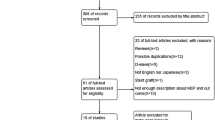Abstract
Paraplegia remains the most devastating complication following thoracoabdominal aortic surgery. Motor-evoked potential (MEP) monitoring has been widely used to assess intraoperative motor function. MEP amplitude is affected by various factors, including anesthetic agents and measurement time; however, there are no reports regarding MEP monitoring using remimazolam in thoracoabdominal aortic surgery. A 57-year-old woman underwent open repair of a thoracic descending aorta for a chronic dissecting aortic aneurysm under remimazolam and remifentanil anesthesia. The administration rate of remimazolam was adjusted using spectral edge frequency of SedLine®, which ranged from 0.2 to 1.0 mg/kg/h after anesthetic induction with 12 mg/kg/h. Muscle MEPs were obtained using subdermal needle electrodes at the abductor pollicis brevis muscle and abductor hallucis. There were no significant changes, which were defined as a 50% reduction of MEP amplitude from each baseline value, including during split circulation. On postoperative day one, she had no motor deficits nor signs of intraoperative awareness. Remimazolam might be well tolerated for MEP monitoring in patients undergoing thoracic descending aortic aneurysm surgery.

Similar content being viewed by others
References
Jacobs MJ, Elenbaas TW, Schurink GW, Mess WH, Mochtar B. Assessment of spinal cord integrity during thoracoabdominal aortic aneurysm repair. Ann Thorac Surg. 2002;74:S1864–6 (discussion S1892).
Kawaguchi M, Kawamata M, Yamada Y. Improvement of motor evoked potentials monitoring is required during thoracic or thoracoabdominal aortic aneurysm surgery under hypothermic cardiopulmonary bypass. J Anesth. 2012;26:157–9.
Kawaguchi M, Iida H, Tanaka S, Fukuoka N, Hayashi H, Izumi S, Yoshitani K, Kakinohana M. MEP monitoring guideline working group of the safety committee of the Japanese society of anesthesiologists (JSA). A practical guide for anesthetic management during intraoperative motor evoked potential monitoring. J Anesth. 2020;34:5–28.
Kakinohana M, Nakamura S, Fuchigami T, Miyata Y, Sugahara K. ‘Influence of the descending thoracic aortic cross clamping on bispectral index value and plasma propofol concentration in humans. Anesthesiology. 2006;104:939–43.
Shirozu K, Nobukuni K, Tsumura S, Imura K, Nakashima K, Takamori S, Higashi M, Yamaura K. Neurological sedative indicators during general anesthesia with remimazolam. J Anesth. 2022;36:194–200.
Arashiro A, Shinzato H, Kamizato K, Kakinohana M. Spinal fusion with motor evoked potential monitoring using remimazolam in Alström syndrome: a case report. Med (Baltim). 2021;100:e27990.
Tanaka R, Sato A, Shinohara K, Shiratori T, Kiuchi C, Murakami T, Sasao J. Comparison of sensory evoked potentials during neurosurgery under remimazolam anesthesia with those under propofol anesthesia. Minerva Anestesiol. 2022;88:81–2.
Aratani Y, Tokinaga Y, Tanioku T, Maruyama T, Kawamata T. A case of decreased amplitude in motor evoked potentials under remimazolam anesthesia. Cureus. 2022;14:e27593.
Yamada S, Akiyama Y, Tachibana S, Hayamizu K, Kimura Y, Hashimoto S, Yamakage M, Mikuni N. The intraoperative motor-evoked potential when propofol was changed to remimazolam during general anesthesia: a case series. J Anesth. 2022. https://doi.org/10.1007/s00540-022-03112-0.
Tanaka Y, Kawaguchi M, Noguchi Y, Yoshitani K, Kawamata M, Masui K, Nakayama T, Yamada Y. Systematic review of motor evoked potentials monitoring during thoracic and thoracoabdominal aortic aneurysm open repair surgery: a diagnostic meta-analysis. J Anesth. 2016;30:1037–50.
Kondo T, Toyota Y, Narasaki S, Watanabe T, Miyoshi H, Saeki N, Tsutsumi YM. Intraoperative responses of motor evoked potentials to the novel intravenous anesthetic remimazolam during spine surgery: a report of two cases. JA Clin Rep. 2020;6:97.
Funding
None.
Author information
Authors and Affiliations
Corresponding author
Ethics declarations
Conflict of interest
The authors declare that they have no conflicts of interest.
Additional information
Publisher's Note
Springer Nature remains neutral with regard to jurisdictional claims in published maps and institutional affiliations.
Supplementary Information
Below is the link to the electronic supplementary material.
540_2023_3168_MOESM1_ESM.pptx
Supplementary file1Images of SedLine® monitor. SF-1a and SF-1b are images taken from aortic declamping to the end of surgery without the effects of rocuronium. Although these two images were taken at different times, they both show a high patient sedation index; however, the spectral edge frequency was within the anesthetic range. In contrast, SF-1c is an image taken prior to endotracheal tube replacement under rocuronium administration with a patient sedation index and spectral edge frequency within the anesthetic range. These findings indicate that the value of the patient sedation index should be interpreted with caution in the absence of neuromuscular blockade (PPTX 8595 kb)
About this article
Cite this article
Aoki, Y., Ida, M., Takatani, T. et al. Motor-evoked potentials monitoring with remimazolam during thoracic descending aortic aneurysm surgery: a case report. J Anesth 37, 315–318 (2023). https://doi.org/10.1007/s00540-023-03168-6
Received:
Accepted:
Published:
Issue Date:
DOI: https://doi.org/10.1007/s00540-023-03168-6




